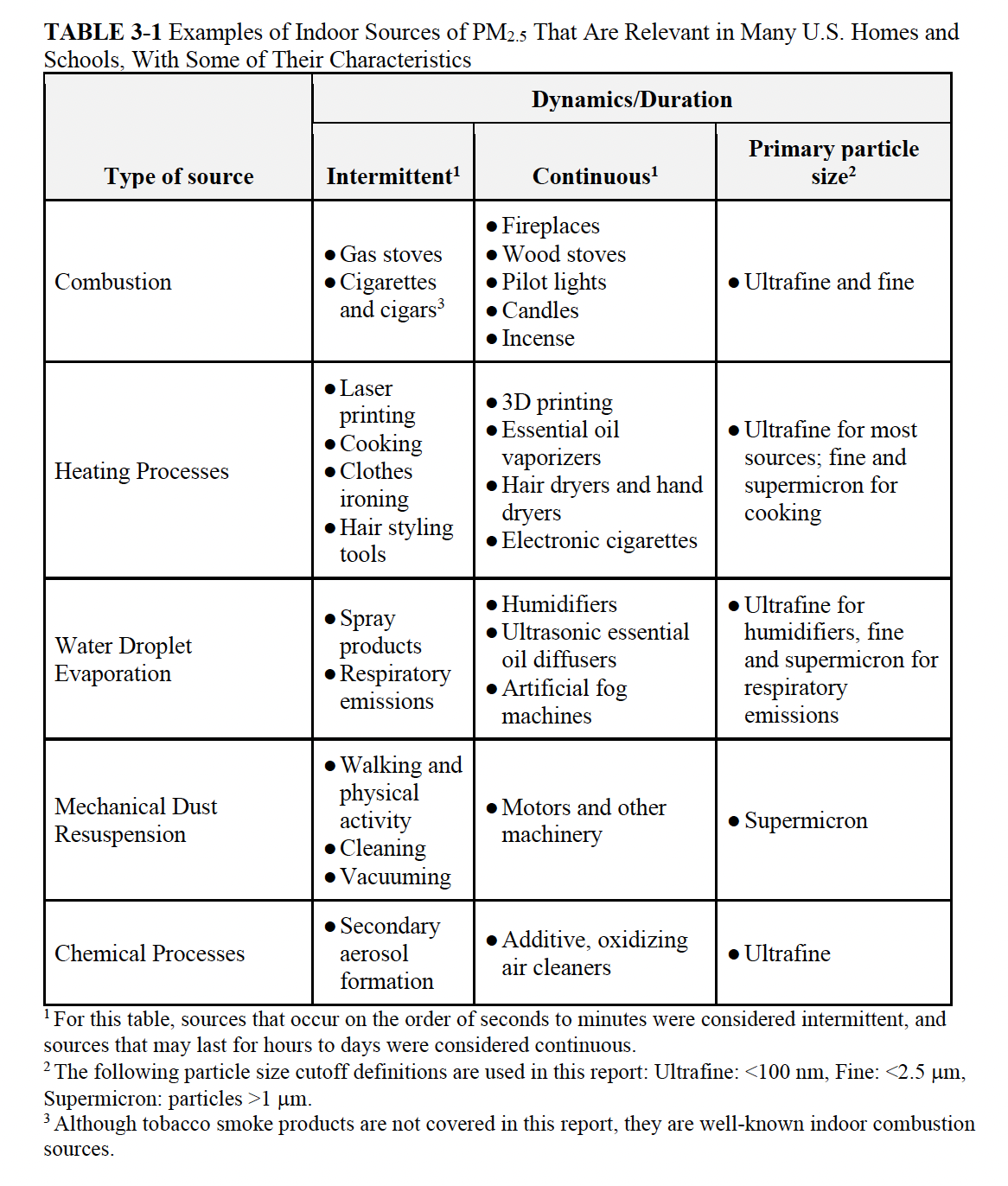
You can’t see them. You can’t smell a lot of them. In fact, they’re hard to access with any of your senses. But that doesn’t mean your body won’t respond to those tiny airborne particles that make up what scientists call PM2.5 (particulate matter that’s 2.5 microns or smaller). A comprehensive new report titled, “Health Risks of Indoor Exposure to Fine Particulate Matter and Practical Mitigation Solutions,” from the National Academy of Sciences (NAS) goes into great detail about this topic. But let’s start here with the very basic question of what PM2.5 is.
The basic definition
The broad definition of what PM2.5 is resides in its name. PM stands for particulate matter, or simply particles. But we’re mostly concerned with the type of particles that float around in the air; they’re generally pretty small.
And that’s where the 2.5 comes in. PM2.5 stands for particulate matter that’s 2.5 microns or smaller. But it’s not really as simple as it may seem on the surface. First of all, there’s a category of even smaller particles, PM0.1, which is the group of particles that’s 0.1 micron and smaller. That category is really a subcategory because it’s also counted as part of the PM2.5 group.
A couple of other terms you may see are fine particles and ultrafine particles. Fine particles are the PM2.5 category, and ultrafine particles are the PM0.1 subcategory.
Particles and gases
Then there’s the definition of particulate matter itself. Does that include all matter? No! Air quality researchers divide air pollutants into two categories: particles and gases.
Gases are individual atoms or molecules in the gaseous state. The major components of air are gases: nitrogen, oxygen, water vapor, argon, carbon dioxide, etc. Pollutants that are gases include carbon monoxide, radon, nitrogen dioxide, ozone, and many more, including volatile organic compounds (VOCs).
Particles are groups of atoms or molecules bound together. They can be either liquid or solid and come from many different sources. They can include inorganic, fungal, bacterial, and viral material.
(Danish air quality specialist Thor-Bjørn Ottosen wrote a nice short article about the difference between particles and gases.)
One reason this distinction is important is because it affects what options you have to remove the pollutants. If you want to remove particles from the air, fibrous media filtration is the main tool at your disposal. For gases, we generally use ventilation with outdoor air to dilute them in the indoor air. For both particles and gases, source control—not letting them into your home at all—should be number one. Indoor air quality is best achieved by a layered approach.
Sources of PM2.5
The first thing to understand is that some of the PM2.5 in your indoor air comes from outdoors and the rest is generated indoors. According to that NAS report I mentioned, about half comes from outdoors and half comes from indoors.
Beyond that, though, how do these fine particles get into the air at all? Where do they come from? Take a look at the table below from the NAS report to see a good breakdown.

The table shows the various sources of PM2.5. Notice that they’re broken down into five categories, which are further divided into how long the particles stick around (intermittent or continuous).
Feedback forthcoming
I’ve been studying the new report and will report back here with more of my understanding from it in future articles.
For those who aren’t inclined to read it, let me tell you how it’s organized. After the introductory chapters providing the basic info about what it is and how they looked at it, the report covers:
- Sources and composition of indoor particles
- Particle dynamics and building characteristics
- Exposure to PM
- Health effects
- Practical mitigation solutions
- Conclusions and recommendations
This report is a summary of what indoor air quality researchers have discovered about PM2.5, and provides a solid overview of where we are in our understanding of this important topic.
_______________________________________________________________________
Allison A. Bailes III, PhD is a speaker, writer, building science consultant, and the founder of Energy Vanguard in Decatur, Georgia. He has a doctorate in physics and is the author of a bestselling book on building science. He also writes the Energy Vanguard Blog. For more updates, you can subscribe to Energy Vanguard’s weekly newsletter and follow him on LinkedIn. Photos courtesy of author, except where noted.
Weekly Newsletter
Get building science and energy efficiency advice, plus special offers, in your inbox.















One Comment
Allison, I didn't fully appreciate the seriousness of PM2.5 levels until seeing your presentation at the Building Science Symposium in Kansas City a couple of years ago, and this is a good overview of that. I'll read the new report as well.
Log in or create an account to post a comment.
Sign up Log in